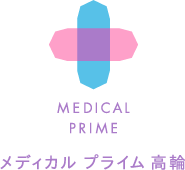It’s hay fever season
2019.03.01
In March, the Japanese-style moon name is Yayoi (Yayoi). The name Yayoi is said to be derived from the expression “the plants and trees grow all over again.” Spring is a season we can’t wait for, but for those with hay fever, it may be a tough season. It was reported that the beginning of cedar pollen spread was confirmed in Tokyo on February 11.
Treatment of hay fever
There are two major types of treatment for hay fever: symptomatic treatment and root treatment. What is being performed in preventive medical care as a root treatment for hay fever is called “Desensitization Therapy” (immunotherapy), in which cedar pollen, which is the cause of the allergy, is put in the body starting with a small amount, and the amount is gradually increased. It is a treatment that builds immunity to protect against pollen antigens. There are two ways to do this, by going to the hospital and having the pollen extract injected subcutaneously (subcutaneous immunotherapy), or by taking the extract under the tongue and swallowing it. The latter, “sublingual immunotherapy,” can be performed at home except for the first visit and regular monthly follow-ups, but it must be done daily. By way of comparison, subcutaneous injection immunotherapy is a treatment that lasts for more than 2 years, and sublingual immunotherapy for more than 3 years, and is a treatment with endurance. More than half of the
medications have suppressed symptoms
On the other hand, in symptomatic treatment for hay fever, internal medicines such as antihistamines, antileukotrienes, chemical transmitter release inhibitors, nasal drops, eye drops, etc., are used in combination according to each symptom such as sneezing, nasal congestion, itchy eyes, and so on. Because it is symptomatic treatment, it’s not a cure for hay fever but a rather a treatment for symptom relief, but even if there are many pollen spreads, 50 to 60% of patients have no major side effects by properly using such drugs. It is known that people can live their lives with almost no symptoms of hay fever.
Difference between symptoms of hay fever and cold
People who have never had hay fever symptoms should not be distressed. The fact that hay fever is so greatly increased means that there are many people who suffer from hay fever every year.
The symptoms of hay fever are similar to a cold, but in addition to the three major symptoms of “sneezing, runny nose, congestion”, it may be accompanied by itchy eyes. If the fluid secreted by the nose is clear and thin in consistency, hay fever is in doubt. If you have these symptoms, consult your healthcare provider.

